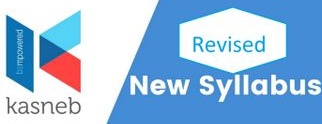1. The context of management accounting:
1.1 Definition and scope of Cost and Management accounting
1.2 Role of Management Accounting in decision making
1.3 Users of Management accounting information
1.4 Cost accounting as a subset of management accounting
1.5 Management accounting and financial accounting
1.6 Difference between management accounting and financial accounting
1.7 Relationship between Management accountant and other managers
1.8 Limitations of management accounting
2. Costing terms and concepts
2.1 Cost definition and identification
2.2 Cost classification
2.3 Cost classification bases; time; behaviour; function; identification with stock; relevance for decision making; management control
2.4 Types of cost systems
2.5 Maintaining a cost database
3. Introduction to cost estimation
3.1 Non-mathematical methods
3.1.1 Accounts Analysis method
3.1.2 High-Low method
3.1.3 Industrial Engineering method
3.2 Mathematical methods
3.2.1 Scatter graph method
3.2.2 Ordinary Least Square method (simple regression only)
4. Cost accumulation
4.1 Accounting for direct material cost
4.1.1 Introduction to Material costing
4.1.2 Objectives of material control
4.1.3 Essential requirements of material control system
4.1.4 Centralised and decentralized purchasing
4.1.5 Periodic inventory system
4.1.6 Perpetual inventory system
4.1.7 Setting stock levels
4.1.8 Factors influencing stock levels
4.1.9 Relevant cost for inventory management
4.1.10 The Economic Order Quantity
4.2 Valuing inventory issues using FIFO, LIFO, standard cost method, weighted average, simple average and replacement cost method
4.3 Accounting for direct labour cost
4.3.1 Methods of labour remuneration
4.3.2 Bonus schemes
4.3.3 Factors influencing wages
4.4 Accounting for overhead cost
4.4.1 Overhead apportionment
4.4.2 Primary overhead distribution
4.4.3 Secondary overhead distribution methods (continuous allocation method, algebraic method, direct allocation method, sequential allocation method)
4.4.4 Absorption of overheads
5. Activity based costing
5.1 Meaning of activity-based costing
5.2 Distinction between activity-based costing and the Traditional absorption costing
5.3 Classification of cost drivers
5.4 The hierarchy of cost drivers
5.5 Overhead absorption rates – ABC
5.6 Income statements – one unit
5.7 Income statement – total output/sales
6. Product costing methods
6.1 Introduction to costing methods
6.2 Specific order costing; Job order costing; Batch costing
6.3 Continuous operation costing; Process costing (normal process losses; abnormal process losses/gains); treatment of closing work in progress; treatment of opening work in progress (FIFO and Weighted Average cost methods); Process costing for joint products and by-products; distinction between joint-products and by-products
6.4 Service costing
7. Marginal and absorption costing
7.1 Differences between marginal costing and absorption costing
7.2 comparative income statements
7.3 Arguments for the use of marginal costing
7.4 Arguments for the use of absorption costing
7.5 Reconciliation statement
8. Cost-volume profit analysis (break-even analysis)
8.1 Introduction to C-V-P analysis
8.2 Assumptions of C-V-P analysis
8.3 Break-even chart
8.4 Profit-volume chart
8.5 Single product C-V-P analysis
8.6 Multiple product C-V-P analysis
8.7 Limitations of C-V-P Analysis
8.8 Applications of marginal costing in decision making (make/buy decisions; discontinue a product; choice of a product where limiting factor exists; acceptance of a special offer); overriding considerations to the above decisions
9. Budgetary control
9.1 Introduction to budgets
9.1.1 Essential features of a budget
9.1.2 Objectives of budgetary control
9.1.3 Difference between forecasts and budgets
9.2 Types of budgets
9.2.1 Classification based on time (long-term budgets, short-term budgets and current budgets)
9.2.2 Classification based on functions (functional/subsidiary budgets, master budgets)
9.2.3 Classification based on capacity (fixed budgets, flexible budgets)
9.3 Preparation of budgets
9.3.1 Functional budgets including cash budget and master budget
9.3.2 Fixed and flexible budgets
10. Standard costing and variance analysis
10.1 Introduction
10.1.1 Types of standards (basic standards, ideal standards, attainable standards)
10.1.2 Advantages and disadvantages of standard costing
10.2 Variance analysis
10.2.1 Material cost variances (usage variance, price variance)
10.2.2 Labour cost variances (efficiency variance, rate variance)
10.2.3 Variable overhead variances (expenditure variance, efficiency variance)
10.2.4 Fixed overhead variances (expenditure variance, capacity variance, efficiency variance and volume variance)
10.2.5 Sales variances
10.3 Causes of the various variances and remedies
